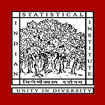Estimating Sensitive Population Proportion by Generating Randomized Response Following Direct and Inverse Hypergeometric Distribution
Document Type
Book Chapter
Publication Title
Handbook of Statistics
Abstract
We consider estimating the proportion of people containing sensitive attributes like habitual drunkenness, drug addiction, reckless car driving, evading the tax liabilities, etc., in a given community. Following the pioneering work of Singh and Sedory (2013), we examine the effectiveness of generating randomized responses by negative hypergeometric distribution in respect to generating randomized responses by direct hypergeometric distribution. We consider sampling of respondents by general sampling schemes having the positive inclusion probabilities for single and paired population units. Essential theoretical derivations for unbiased estimator, variance and variance estimators are presented here. We perform a numerical illustration for comparison purpose which support the usefulness of Singh and Sedory's (2013) negative hypergeometric approach.
First Page
427
Last Page
441
DOI
10.1016/bs.host.2016.01.024
Publication Date
1-1-2016
Recommended Citation
Dihidar, K., "Estimating Sensitive Population Proportion by Generating Randomized Response Following Direct and Inverse Hypergeometric Distribution" (2016). Book Chapters. 230.
https://digitalcommons.isical.ac.in/book-chapters/230

